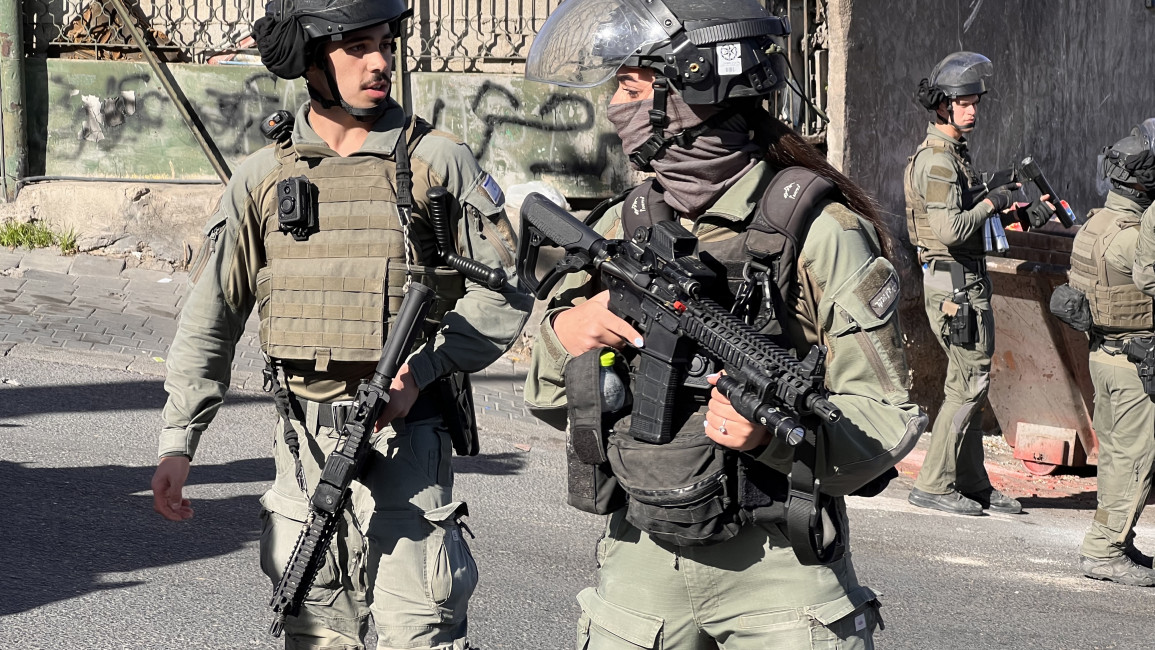Israeli army forced to use '1970s' munitions amid shortages at start of Gaza war
Israel’s army was forced to use outdated weapons and arms equipment as the army found itself inadequately prepared at the start of the war in Gaza, in the latest revelation to shine a light on the military’s failings against Hamas.
In the first months of the war, the army, ill-prepared to fight, faced a munitions shortage that forced units to deploy 1950s-era shells, causing an "operational nightmare".
Israeli daily Haaretz spoke to a reservist who described the chaos as Hamas’ incursion into southern Israel on October 7 took the military by surprise.
"There was a crazy shortage of equipment and the canons we had weren't all in working order. Some worked, some were half dead,” the reservist told the newspaper.
The war has also seen Israel drop an unprecedented number of bombs on Gaza in just five months which has destroyed 35 percent of the territory’s infrastructure and killed 32,000 Palestinians.
Israel’s military reservists—citizens who have completed military service but are not on active duty—were enlisted through an urgent call-up at the outbreak of the war
Though Israel has a sophisticated arms industry, it also relies on the United States for large portions of its weapons supplies.
However, since the Ukraine war, much of the US supply had been diverted there, resulting in an urgent relocation of weapons to Israel in the first months of the war.
Artillery units scrambling to defend themselves against attacks from Hamas battalions were left to use "munitions dating back to the 1950s" which were in poor condition and produced "unusually high quantities of smoke that made it difficult for crews to fire for prolonged periods of time", the Haaretz article noted.
In keeping with NATO standards, Israel uses "one of the world’s most wanted" 155mm artillery shells for its howitzer guns, a type of long-range artillery weapon which looks like a cannon.
Some of the cannons being used in the war originate from deals made with the US army in the 1970s, according to the Haaretz article.
These shells have seen huge price rises as demand has soared across the world in recent years, and Israel’s defence ministry signed a multi-million-dollar contract with Israeli weapons firm Elbit Systems which has factories in Britain, to produce these shells.
It is also believed that the shells were included in the military aid package from the US which Israel has been receiving.
Since the start of the war, the army has been struggling to handle the guerrilla warfare approach of Hamas, in which fighting has been mainly concentrated in urban surroundings.
Other soldiers interviewed by Haaretz spoke of shortages of munitions from overfiring, and instances whereby officers told troops to preserve shells in case of flare ups in different areas of Gaza.
The soldier also mentioned that irregular shipments of munitions caused 'chaos,' noting an occasion when a unit received munitions marked "for training only" on the shells
The revelations are the latest in a series of failings on the part of the Israeli military in its war against Hamas.
Israel’s defence spending per capita is one of the highest in the world and for years it has prided itself on its advanced weapons technology and its intelligent service, Mossad.
Despite this, it failed to predict Hamas’ incursion into Israel which saw around 1,100 Israelis killed and over 200 taken captive by the group.
One of Israel’s failures was exposed after reports from its own troops who sit on the Gaza border post, known as ‘spotters’ which had documented Hamas’ military activities in the lead up to the attack, were routinely ignored.
Earlier this week, Israel’s Channel 12 network published a broadcast from a 19-year-old female spotter, who was later killed, recorded on the morning of 7 October, which details the beginnings of Hamas’ attack.



